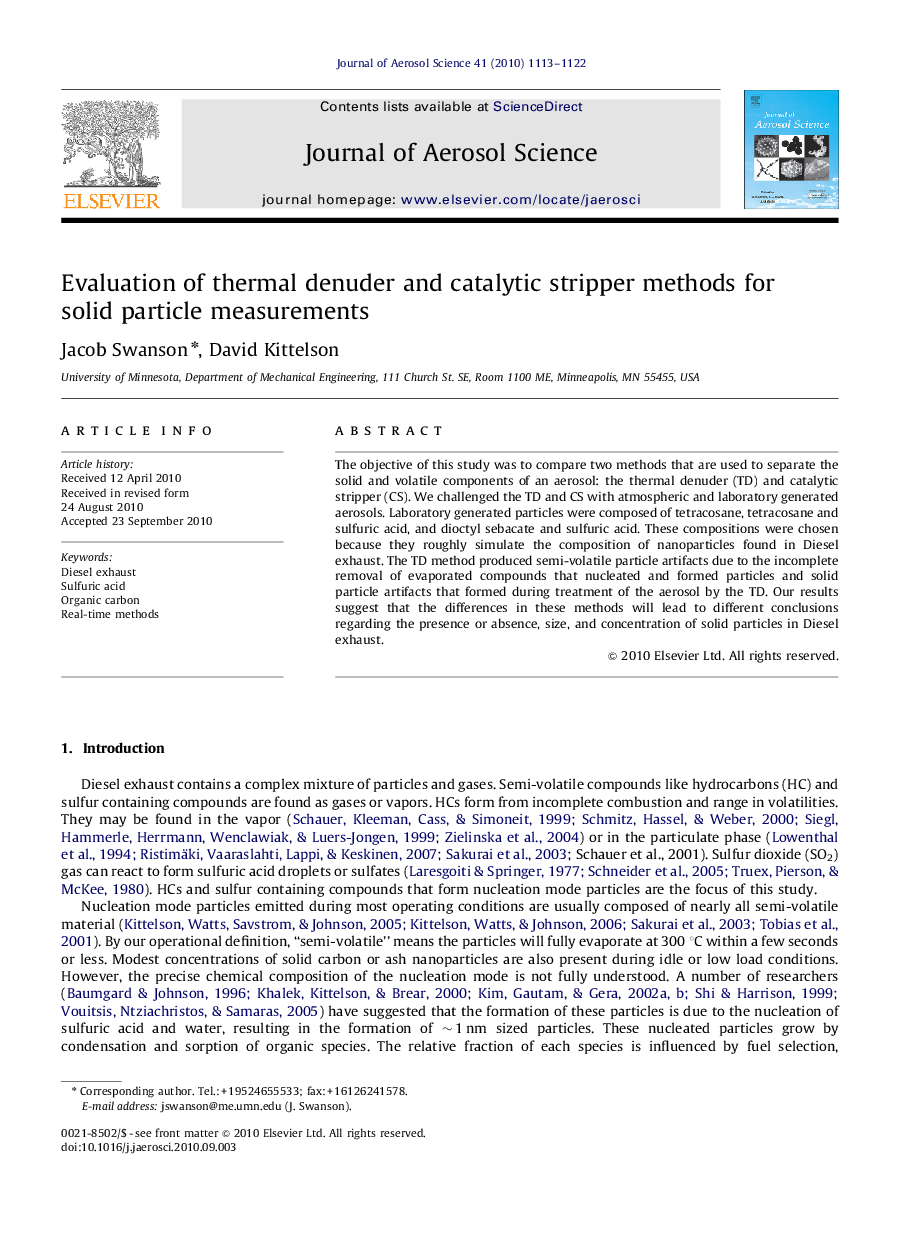| Article ID | Journal | Published Year | Pages | File Type |
|---|---|---|---|---|
| 4452812 | Journal of Aerosol Science | 2010 | 10 Pages |
The objective of this study was to compare two methods that are used to separate the solid and volatile components of an aerosol: the thermal denuder (TD) and catalytic stripper (CS). We challenged the TD and CS with atmospheric and laboratory generated aerosols. Laboratory generated particles were composed of tetracosane, tetracosane and sulfuric acid, and dioctyl sebacate and sulfuric acid. These compositions were chosen because they roughly simulate the composition of nanoparticles found in Diesel exhaust. The TD method produced semi-volatile particle artifacts due to the incomplete removal of evaporated compounds that nucleated and formed particles and solid particle artifacts that formed during treatment of the aerosol by the TD. Our results suggest that the differences in these methods will lead to different conclusions regarding the presence or absence, size, and concentration of solid particles in Diesel exhaust.
Research Highlights► Comparison of thermal denuder and catalytic stripper methods. ► The thermal denuder method may produce semi-volatile particle artifacts due to incomplete removal of evaporated compounds. ► Thermal treatment methods may produce solid particle artifacts. ► Different methods will lead to different conclusions regarding the nature of solid particles in Diesel exhaust.
